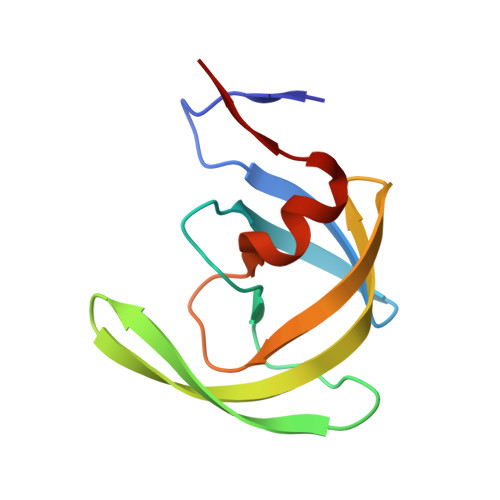Structure-Guided Design of C2-Symmetric HIV-1 Protease Inhibitors Based on a Pyrrolidine Scaffold.
Blum, A., Bottcher, J., Heine, A., Klebe, G., Diederich, W.E.(2008) J Med Chem 51: 2078-2087
- PubMed: 18348517
- DOI: https://doi.org/10.1021/jm701142s
- Primary Citation of Related Structures:
2PQZ, 2PWC, 2PWR, 2QNN, 2QNP, 2QNQ - PubMed Abstract:
Infections with the human immunodeficiency virus, which inevitably lead to the development of AIDS, are still among the most serious global health problems causing more than 2.5 million deaths per year. In the pathophysiological processes of this pandemic, HIV protease has proven to be an invaluable drug target because of its essential role in the virus' replication process. By use of pyrrolidine as core structure, symmetric 3,4-bis-N-alkylsulfonamides were designed and synthesized enantioselectively from D-(-)-tartaric acid as a new class of HIV protease inhibitors. Structure-guided design using the cocrystal structure of an initial lead as starting point resulted in a second series of inhibitors with improved affinity. The binding modes of four representatives were determined by X-ray crystallography to elucidate the underlying factors accounting for the SAR. With this information for further rational design, the combination of suitable side chains resulted in a final inhibitor showing a significantly improved affinity of K(i) = 74 nM.
Organizational Affiliation:
Institut für Pharmazeutische Chemie, Philipps-Universität Marburg, Marbacher Weg 6, Marburg, Germany.

















